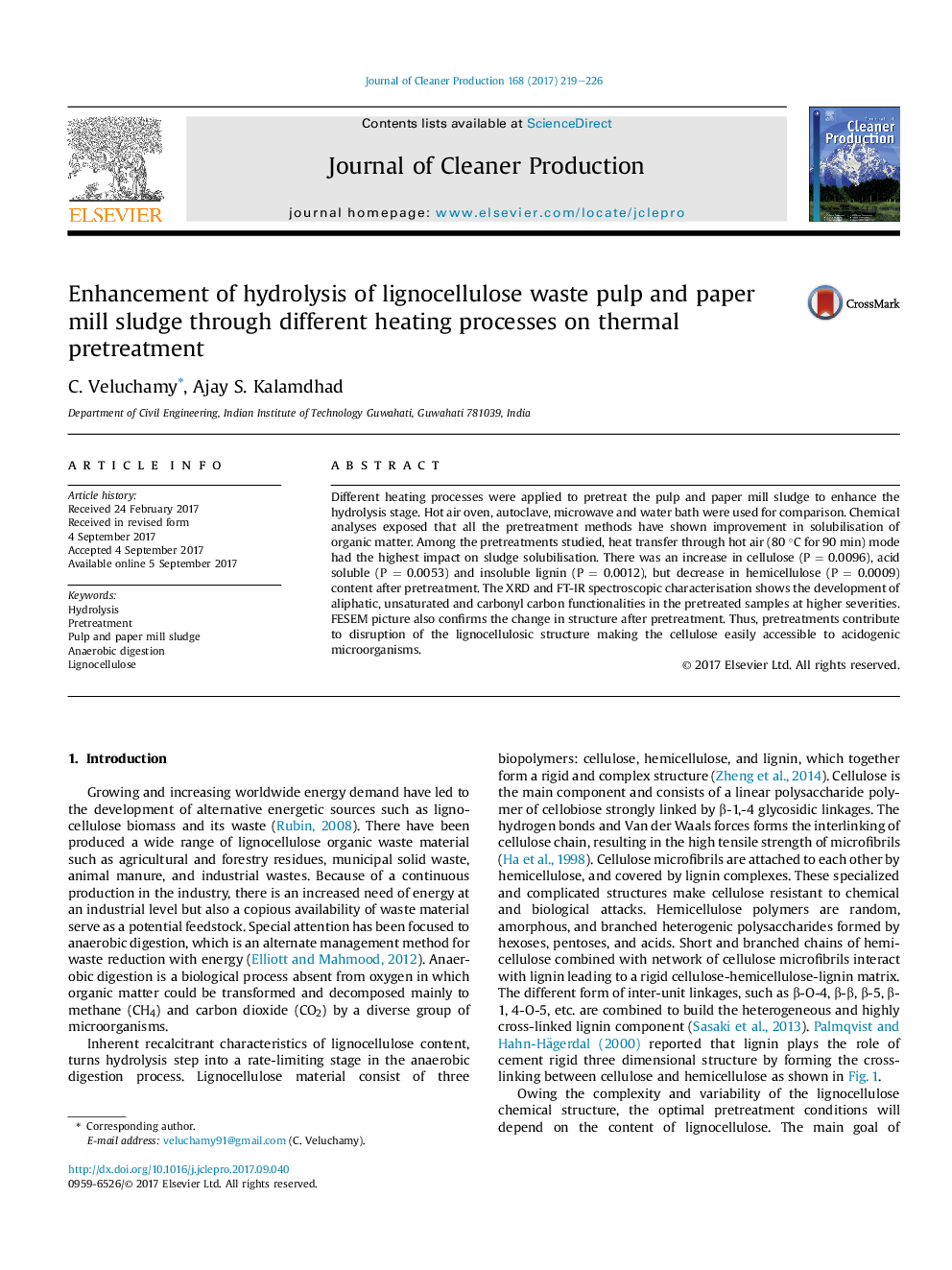| Article ID | Journal | Published Year | Pages | File Type |
|---|---|---|---|---|
| 5479793 | Journal of Cleaner Production | 2017 | 8 Pages |
â¢Four types of heating device on thermal pretreatment were studied to enhance the hydrolysis.â¢Hot air oven pretreatment is the most efficient in solubilisation of organic matter.â¢Compositional and instrumental analyses showed that thermal pretreatment has strongly affected the lignocellulose structures.
Different heating processes were applied to pretreat the pulp and paper mill sludge to enhance the hydrolysis stage. Hot air oven, autoclave, microwave and water bath were used for comparison. Chemical analyses exposed that all the pretreatment methods have shown improvement in solubilisation of organic matter. Among the pretreatments studied, heat transfer through hot air (80 °C for 90 min) mode had the highest impact on sludge solubilisation. There was an increase in cellulose (P = 0.0096), acid soluble (P = 0.0053) and insoluble lignin (P = 0.0012), but decrease in hemicellulose (P = 0.0009) content after pretreatment. The XRD and FT-IR spectroscopic characterisation shows the development of aliphatic, unsaturated and carbonyl carbon functionalities in the pretreated samples at higher severities. FESEM picture also confirms the change in structure after pretreatment. Thus, pretreatments contribute to disruption of the lignocellulosic structure making the cellulose easily accessible to acidogenic microorganisms.
